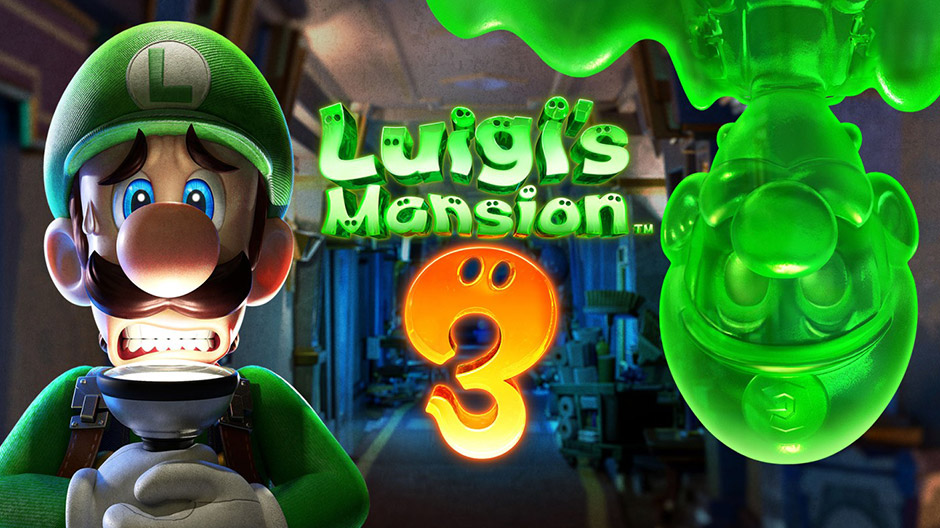
With the triumphant return of Luigi’s Mansion, the third instalment in this few-and-far-between series cements itself as the most impressive entry to date. Luigi’s Mansion 3 picks and pulls from the franchise’s best bits, while adding enough new features to offer a fresh take on Luigi’s terror-filled adventure. The latest release sees the return of the GameCube original’s Portrait Ghosts, while following a similar (but vastly more impressive) art style as Luigi’s Mansion: Dark Moon. The inclusion of Gooigi is just the icing on the cake and flatters the game as its most inventive addition.
As much as I loved Luigi’s Mansion 3, the game does rely a bit too much on the merits of its predecessors. This is probably its biggest flaw and something it does without giving enough creative prospects towards new features. Gooigi aside, many of the new ideas feel as if they lack motivation behind their motive. Resulting in a handful of gameplay mechanics that never quite reach the full potential they deserve.
Despite its willingness to borrow from the past, Luigi’s Mansion 3 decides not to reuse some of the better quality-of-life decisions (ones that would have been welcomed back with open arms). Instead, there are instances of new and often inferior mechanics replacing older ones. For example, some of the elements of Dark Moon that heightened the game to modern standards (such as the ability to use money to upgrade your Poltergust) are instead replaced by a sparse and somewhat obsolete shop. A decision which removes a much-needed sense of progression in the monetary department.
A Spectral Symphony of Paranormal Production
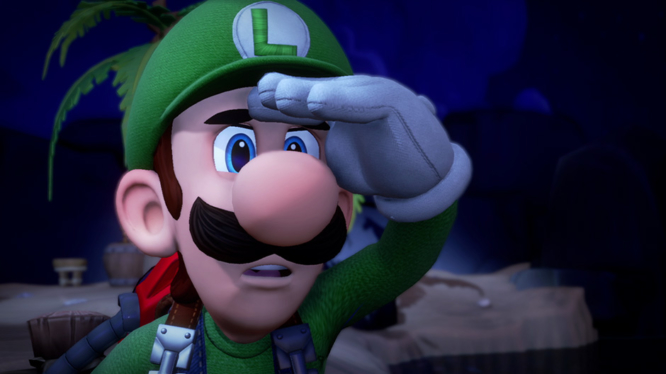
Right from the get-go, it’s obvious that the biggest upgrade in Luigi’s Mansion 3’s is the sheer amount of production value poured into every minute detail. A lengthy and charming cut-scene paints the background for Luigi’s vacation—and inevitable trap. Rolling hills bladed with lush grass and towering mountains paint the scenic vista surrounding the hotel Luigi has been invited to stay at. The hotel itself is grand and elegant, decorated by gold-plated walls and marble-etched floors. Polterpup frolics in and out of walls and although everything appears perfect, you get the underlying sense that something isn’t quite right.
The bellhops wear masks, and the hotel owner is named Hellen Gravely. But, due to Luigi’s inability to take a hint, everyone proceeds to their rooms to rest. In the middle of the night, Luigi is awakened by a blood-curdling scream, and his once-decorous room is now brimming with all the tell-tale signs of a proper haunting. A layer of fog covers the floor, Jack-in-the-boxes jump out of wardrobes, and even the balloons now boast sinister faces.
The level of detail is not unique to just the prologue; it is ingrained in every room this hotel has to offer. Whether you’re exploring the aptly-named “RIP Suites” or the depths of an Egyptian pyramid, everything looks fantastic and is brimming with charm. Your eyes will never cease to find a new detail, a hidden room, or a new collectable uniquely concealed. It’s these details that define Luigi’s Mansion 3 as a titular passion project.
Who You Gonna Call?
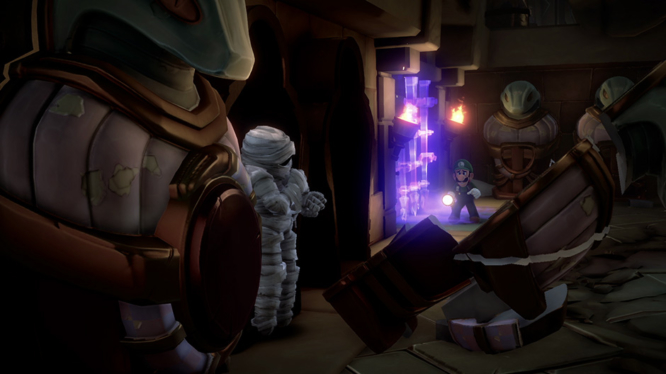
Of course, it wouldn’t be a proper sequel without a shake-up in gameplay. Shortly after Luigi obtains the new-and-improved Poltergust G-00, he is given an introduction to new and old mechanics by Professor E. Gadd himself. Making their return from Dark Moon are the Dark-Light Device and chargeable Strobulb. While the new additions include Slam, Burst, Suction Shot, Gooigi, and…. a feature that I’ll leave unnamed since it doesn’t appear until late in the game.
Used for damaging ghosts and warding off any others that may be closing in, Slam is one of the better mechanics in Luigi’s Mansion 3 (if only for how cathartic it can be). Whether you’re slamming a ghost against the floor, or using it to whack its buddies; there’s definitely a great sense of satisfaction in the move’s addition.
Burst, on the other hand, is more of a defensive maneuver. Shooting Luigi up into the air and helping shake off any enemies that are getting a little too close for comfort. As an added bonus, it can also be used to disrupt the environment and reveal hidden items and money. More uniquely is when the game uses the environment as a hazard, forcing Luigi to use Burst to escape a trap or progress down a path. Unfortunately, the mechanic is scarcely utilised for that purpose though.
With Suction Shot, Luigi can shoot a plunger out of the Poltergust G-00. Doing so will cause the plunger to stick to certain objects, allowing Luigi to pull or fling it across the room. This mechanic really shows off the game’s impressive destructibility, with nearly every object in the game waiting to be flung and smashed. Objects aside, the Suction Shot can also be used as an offensive weapon against some of the ghosts. It is quite satisfying when you plunge a Goob into a dazed stupor but rather intimidating when a brutish Hammer shrugs it off as if nothing hit him.
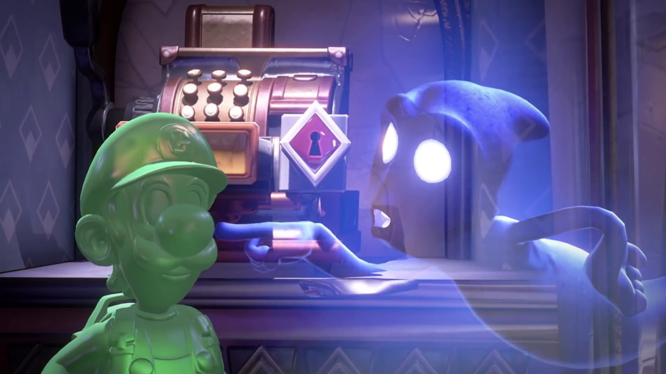
Gooigi—Luigi’s gooey doppelganger—is far and away the most well-thought-out and clever mechanic in Luigi’s Mansion 3. Technically, Gooigi’s first appearance was in the Luigi’s Mansion remake on 3DS, but his role here outshines his introduction. Luigi’s Mansion 3 is designed to cater to the his unique qualities and nearly every floor has a purpose that only Gooigi can fill. Whether he’s slipping past a barred gate, slinking underneath a shower drain to uncover a new area, or helping Luigi move a heavy object that neither could do alone, Gooigi manages to outshine every other aspect of the game. It is through Gooigi that a majority of the puzzles are given purpose, and since this is the first time he’s truly been utilised, it offers a breath of fresh air to the franchise’s gameplay.
Lastly, the introduction of the unnamed feature is where things begins to go wrong. It’s introduced in the last quarter of the story and is wildly impressive at first glance. Yet, the feature is rarely used enough to make a worthy impact. Unfortunately, it is a prime example of incredible mechanics that manage to lessen the game by not being used to its fullest potential.
After being introduced to all these features, my mind began to run wild with ideas on how I could use them to interact with the environment and enemies. Unfortunately, Luigi’s Mansion 3 often only has one right way of doing something, thus limiting your creativity in the process. Let’s use the Polterkitty boss fight as an example. I won’t spoil the right way to beat this enemy or the intricacies of the fight itself, but I will discuss one of the wrong ways of approaching it. The first step to the fight is tricking Polterkitty into thinking your guard is down. In doing so, she will sneak up on you, making herself ready to pounce. Due to the close proximity between Luigi and her, I thought it would make sense to Burst. Doing so did daze Polterkitty, but never so I could Strobulb and capture her. Similar examples can be used for nearly every boss fight, and it can often be frustrating when you come up with a solution but the game forces you into tackling the situation the way it sees fit.
Gameplay Loop without the Ghostly Spook
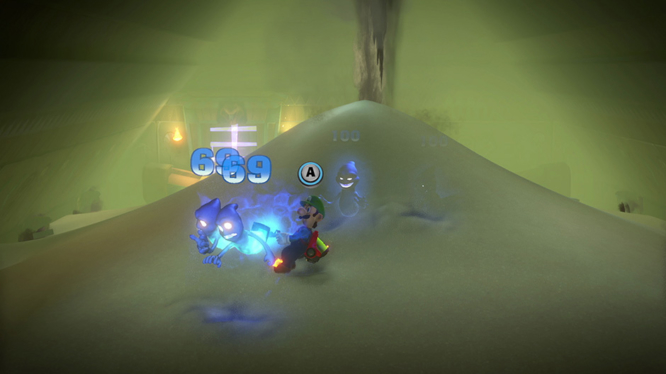
More important than the mechanics of the Poltergust G-00 are the ghosts themselves. After all, what good is a ghost-sucking vacuum without them?
As much as I hate to say it, ghost variety is where this game really falters.
Goobs are your bog-standard enemy. You’ll encounter these more frequently than any other as they wind up their punches to strike. Hammers are your typical brute enemy. Large and menacing, they can only be bested by a Strobulb hit and tackling them from behind. Oozers are the sneaky enemies that will gladly let themselves be seen from a distance. Jumping out of trash cans and furniture, Oozers won’t hesitate to throw something across the room when Luigi’s back is turned. Slinkers will do everything in their power not to be seen. Sneaking up from behind, the only escape from its embrace is if Luigi uses Burst to push it back.
Compared to the rest, Trappers are the most inventive ghosts in Luigi’s Mansion 3. Sporting a forked tongue, both Luigi and Gooigi need to work together to capture them. Then there are Mini Goobs and Mini Hammers. These new mini variants serve only to pester and are easily disposable in large groups after a strike of the Strobulb.
All in all, that totals seven standard ghost types, all of which have a unique gimmick and personality—discounting the Minis. The problem isn’t inherently in the ghosts themselves, but in how infrequently they are executed.
Throughout my twelve-hour play-through, I captured 146 Goobs, 15 Hammers, 15 Oozers, 25 Slinkers, 3 Trappers, 277 Mini Goobs, and 55 Mini Hammers. The variation in these numbers is nothing short of abysmal. Every room held host to a handful of Goobs, a majority of which were defeated in the same exact way, every single time.
On occasion, I’d encounter a Goob with a bucket or helmet over its head. I’d cheer at the ounce of diversity before quickly using Burst and moving on with the tedious, monotonous procedure of strobing and sucking – without ever really feeling challenged. The Mini variants are a baffling decision, travelling in dozens and existing only to slow you down for the three seconds it takes to capture them. The ghosts you face in the beginning of the game are the same ghosts you fight by the end; there is never a sense of progression.
Halfway through Dark Moon, the game introduced a fascinating new catch. The ghosts evolved, now having more health and dealing stronger punches. Luigi was no longer an overpowered plumber with his upgraded Poltergust 5000. Instead, the player had to be more careful and strategic with how they tackled each room. It was a mechanic that decidedly challenged the player once they were far enough to have gotten the hang of things, putting what they learned to the test. Luigi’s Mansion 3 completely lacks this substance and instead paints Luigi’s adventure through the hotel as more of a leisurely stroll than an unsteady tiptoe.
Comparing Luigi’s Mansion 3 to Dark Moon for every feature would admittedly be a disservice though, due to the return of Portrait Ghosts. While not strictly referred to as Portrait Ghosts, they still carry the same essence as they did in the original. Thanks to cut-scenes that introduce each Boss, the player gets a sense for how unique each one is. Whether Luigi is facing off against a sassy DJ, a classical composer in a powdered wig, or a brawling caveman wielding a cartoonishly large bone club, the Boss Ghosts are a welcome return to form.
Speaking of the differences from Dark Moon, Luigi’s Mansion 3 does away with the controversial mission-based system of its predecessor. Instead, each floor is treated as its own personal level, and once you get past the first few, each one becomes its own Disney theme park worth exploring. As soon as you begin to get tired of the standard hotel offerings—such as lobbies, rooms, and gift shops—the game thrusts you onto a pirate ship a sail on open waters, a botanical garden, medieval times, and so forth. These floors harken back to the attention to detail and love that is poured into every facet of the game.
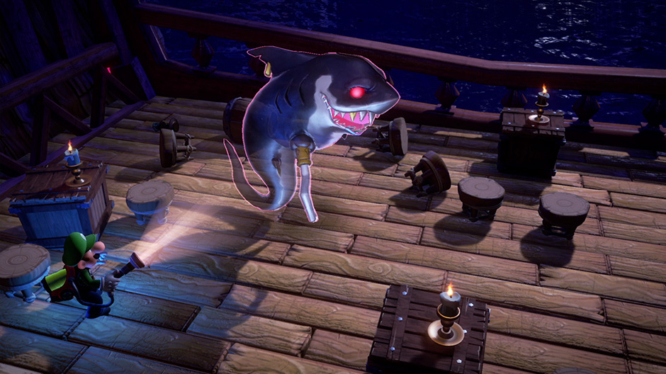
Preventing you from moving right to the top of the hotel are the Boss Ghosts, each of which are in possession of an elevator button. The gameplay loop is tight, entering a new floor, evading its traps, searching for the hidden collectables, and eventually capturing the Boss Ghost. After retrieving the dropped button, Luigi begins his march back to the elevator, a sluggish process due to the inability of the player to control Luigi’s ability to run. Pressing in the left thumbstick is not mapped to any function, and yet, Luigi is only capable of running as long as he leisurely strolls in a straight line for a few seconds – in which case he’ll automatically begin his jog. In the age of clickable thumbsticks, this omission is nothing short of dumbfounding, and while the process of heading back to an elevator never takes more than a minute or two, it hinders the overall enjoyment of reaching the next floor by turning the trek back into somewhat of a slog.
Collectables litter every nook and cranny in this packed hotel. There are over one hundred gems, an extensive list of achievements, Boos on every floor—each with puns for names—and tens of thousands of dollars worth of coins, bills, gold bars, and pearls. Finding each of these commodities is never dull or disappointing, but the game’s use for them certainly is. As always, E. Gadd is here to teach you the valuable lessons of money and how it makes the world go round. This time, he sets up a shop in the lab with three rather lackluster items for sale.
The first of which is a Gold Bone, which gives Luigi a second chance in the misfortune of losing all of his health. When the Gold Bone is used, you are placed into an admittedly adorable (but arduously long and unskippable) cut-scene of Polterpup licking Luigi back to life. The problem with the Gold Bone is that it takes away what little challenge the game already had to offer. E. Gadd only has a handful in stock at a time, but there is no limit to how many you can own at once. By the time I encountered the final boss, I had more lives than Polterkitty herself.
Then, you have the Gem Finder and Boo Finder, which do exactly what you expect them to do. While the sentiment of giving a helping hand for finding collectables is nice, the process of doing so takes its toll. Whether you can afford to buy one or fifty, you can only purchase one at a time, turning what should be an easy-to-use feature into an onerous task. In the age of speedy online walkthroughs, these two items become immediately outmoded.
When compared to Dark Moon’s use of money (upgrading the Poltergust 5000) the shop is simply inferior. Upgrading gave the player the opportunity to fight back when the ghosts evolved and the ante was upped, leading to a more satisfying sense of gameplay progression. Abandoning this feature exudes the presence that something has been forgotten, therefore causing the product to be sorely lacking as a result.
Who Said Eight’s A Crowd?
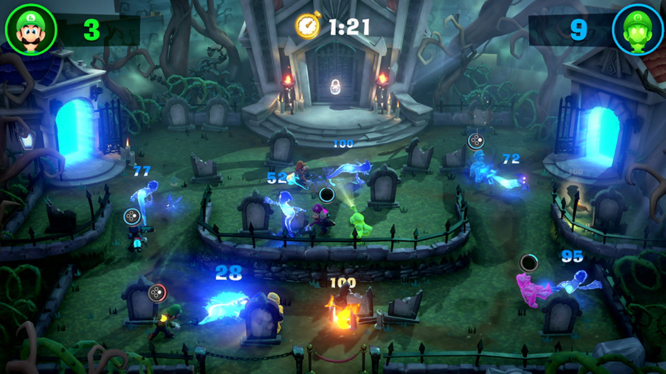
Luigi’s Mansion 3 is very friendly when it comes to playing local co-op and online thanks to its handful of modes, both new and old. For the campaign, a second person can play the entire game as Gooigi, encouraging partners to work together to solve puzzles and capture ghosts. Gooigi’s presence as a permanent player never makes the game feel unbalanced, though, as he only has a fraction of the health and is incapable of going through water. The co-op is drop-in, drop-out whenever you wish, so you don’t have to worry about starting over from the beginning if somebody would like to join you.
Making its return from Dark Moon is the new and improved ScareScraper. Also allowing co-op, this mode can be played with up to eight people. The general goal of completing the objective and reaching a new floor still holds true, but the mode itself has been massively renovated. Objectives includes capturing all the ghosts, rescuing Toads, and Strobulbing a hundred ravens. Random events might turn out the lights or hide your Poltergust on the other side of the floor. A variety of upgrades allow you to increase the power of your Poltergust, see things you normally couldn’t without the Dark-Light Device, and so on. Carpets can ensnare you, and fake-out doors will press you between the wall and the door itself.
Exclusive to this mode are Rare Ghosts, which certainly live up to their name. During my few hours in ScareScraper, I only ever encountered one: Regen Goob. This pink variant of the Goob can regenerate health adding an extra quirk to the gameplay by forcing Luigi to think fast before the ghost’s health fully returns. The more features exclusive to this mode I came across, the more confused I was as to why they were exclusive in the first place. Introducing any of these items or traps or Rare Ghosts to the story would’ve added an extra layer of much-needed depth. If you’re looking for simple, arcadey goodness, there’s an argument to be made that ScareScraper is more fun than the campaign itself.
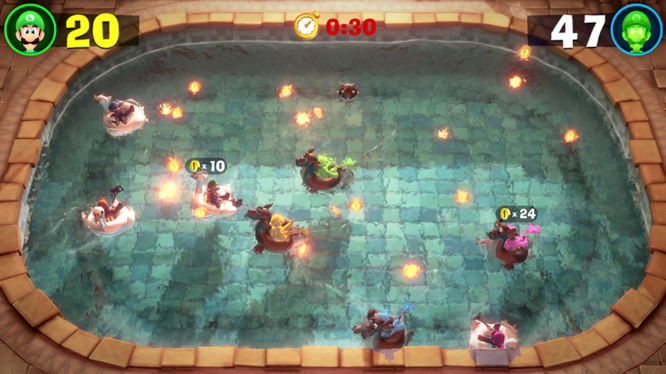
The last mode, called ScreamPark, is brand new to Luigi’s Mansion 3. A co-op only mode, it introduces a handful of mini-games reminiscent of Mario Party. Unfortunately, I haven’t had the opportunity to play this mode with anyone else, but I still went ahead and tried all three. Each one ranges from two-to-eight players and is team-based, and is the only mode that can be played with an individual joy-con per person.
The first, titled Coin Floating, places players in a pool using the Poltergust to push and pull themselves towards coins and away from mines. Collecting a rare Star will make you temporarily invincible from the mines as well as an offensive threat to the enemy players. The team with the most coins at the end of the timer wins. The next mode is Ghost Hunt. Set in an eerie graveyard, the goal is to capture as many ghosts as possible. The rarer the ghost, the more points it’s worth. Strobulbing Polterpup will give you a temporary upgrade that allows you automatically begin Slamming ghosts without having to charge. The last mode is called Cannon Barrage. Posed on top of a castle, each team must work together to collect cannonballs and fire them at moving targets, a task that gets subtly harder with the inclusion of ghosts hoarding the cannonballs partway through the game. Most targets are worth one point, but the harder-to-hit gold ones accrue three points each.
Although I wasn’t able to enjoy the modes to their fullest potential, I can see that there is absolutely potential to be had. Certainly, it’s a perfect go-to pleasure for when you’re hosting friends.
The Good, the Bad, and the Terror
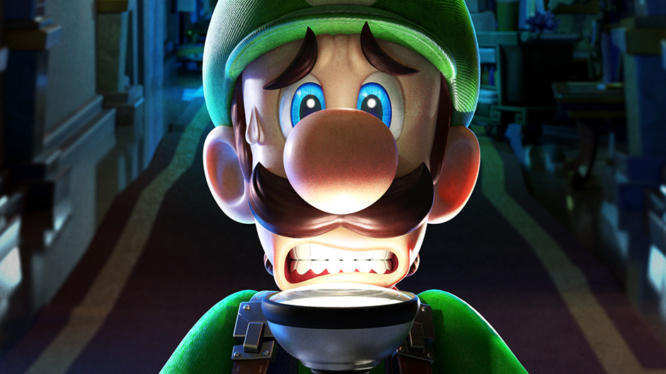
Luigi’s Mansion 3 is possibly the most “Nintendo” game created this generation. It imbues charm and bolsters a gorgeous art style to boot. An impressive feat considering I never once had a noticeable frame drop during my playtime. It’s certainly a game worthy of the “Nintendo Seal of Quality”.
Yet, in a generation of games (such as Legend of Zelda: Breath of the Wild or Super Mario Odyssey) that have pushed the ideas of game design forward and thrust the industry to new highs, Luigi’s Mansion 3 undecidedly stumbles over its own footing enough times to hinder the acclaim that it admittedly does deserve. It’s a game that I want to love more than any other, but much of the praise is earned by borrowing ideas from its predecessors while never quite nailing all of the new features brought to the table.
Well, at least we didn’t have to wait twelve years this time.





